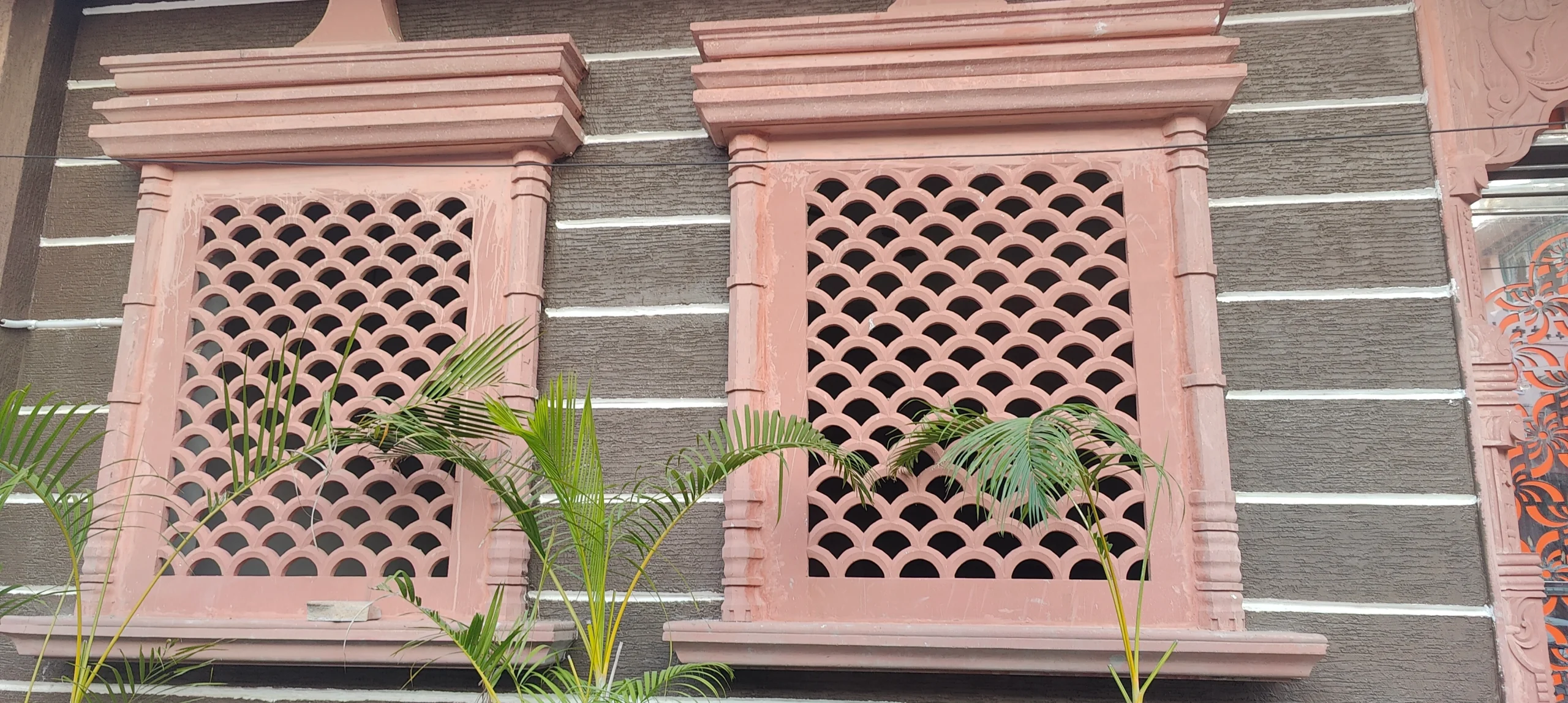Dholpur Stone House Design
Dholpur stone, often referred to as Dholpuri stone, originates from the Dholpur district of Rajasthan, India. This natural stone is known for its aesthetic beauty, durability, and resistance to weathering. It is widely used in architecture, especially in North India, for both historical landmarks and modern structures. If you’re considering designing a house with Dholpur stone, here are some design ideas and aspects to consider:
1. Color Palette:
Dholpur stone comes in various shades, the most popular ones being red, beige, and pink. Depending on the desired ambiance, you can choose a specific shade.
- Red: Provides a rustic, historical feel.
- Beige: Renders a contemporary, minimalist touch.
- Pink: Offers a subtle, elegant look.
2. Facades and Exterior Walls:
A Dholpur stone-clad exterior provides not only a magnificent look but also natural insulation. The stone’s thickness can keep interiors cool during the summer and warmer during winters.
3. Flooring:
Using Dholpur stone for flooring gives a natural, earthy feel underfoot. It’s also quite durable and resistant to wear and tear.
4. Courtyards and Gardens:
Design an open courtyard with Dholpur stone pathways or a centerpiece like a fountain. The stone blends naturally with greenery, making your garden or courtyard look both traditional and luxurious.
5. Interiors:
For a consistent design, consider using Dholpur stone for interior walls or specific highlight areas, such as a fireplace mantle or a feature wall.
6. Bathrooms:
Dholpur stone can be used for bathroom counters and walls, giving a spa-like natural aesthetic. However, ensure it’s well-sealed to prevent water absorption and staining.
7. Incorporate Traditional Elements:
Given its historical significance, integrating traditional Indian architectural features like jharokhas (overhanging enclosed balconies), jaalis (latticed screens), or chhatris (domed pavilions) can enhance the stone’s beauty.
8. Combining with Other Materials:
Though Dholpur stone is stunning on its own, combining it with wood, glass, or metal can provide a balanced modern-traditional blend.
9. Lighting:
Light plays a pivotal role in enhancing the beauty of stone. Using warm lighting can accentuate the stone’s natural texture and veins, especially during the evenings.
10. Maintenance:
While Dholpur stone is relatively low maintenance, periodic cleaning and sealing can ensure it remains pristine for years. Using a natural stone sealer can prevent stains and moisture absorption.
Conclusion:
A Dholpur stone house design exudes a timeless elegance that resonates with both Indian architectural heritage and contemporary design sensibilities. Whether you’re renovating a historic property or building a new home, incorporating this versatile stone can provide aesthetics, durability, and a unique character to your abode.
